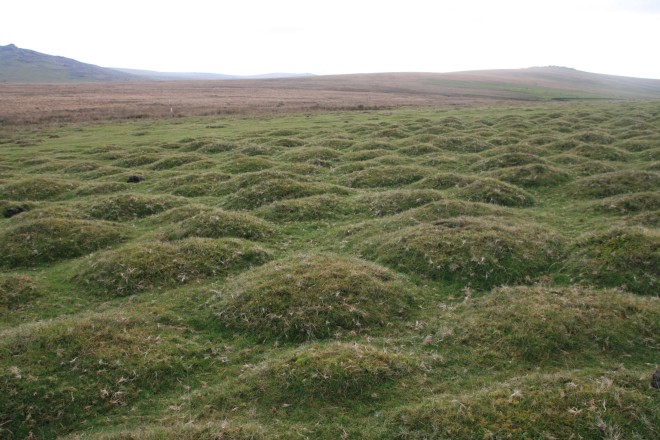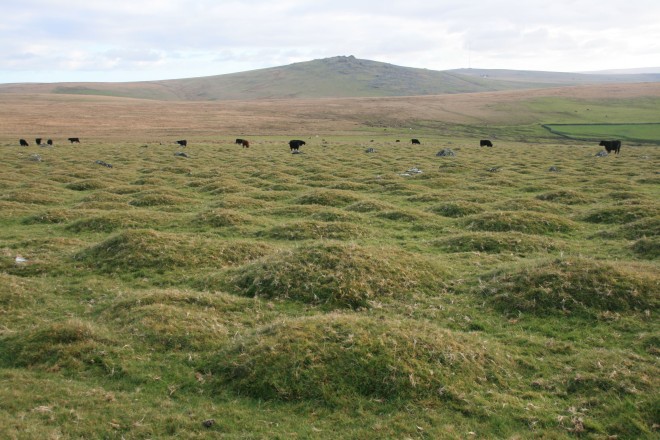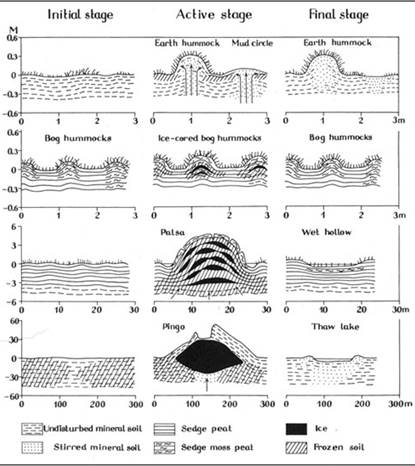As part of our 10 Tors training, The National Trust Wild Tribe and Torquay Boys Grammar School teams, camped near Foggintor on Saturday night and then spent Sunday walking across the moor back to Okehampton camp.
It was so cold putting up tents on Saturday at dusk …. everyone was in their tents and sleeping bags by 8pm. It was one of those night when it seemed that you were awake all night – sleep seemed a luxury which was just out of reach. I was warm most of the night but when the wind got up and battered the tent you could feel a cold breath of air fill the tent and pivot the temperature towards the uncomfortable. I think everyone had similar experiences but fortunately nothing worse.

The first team had left camp by 6.30am and all were on their way by 7. We left camp at dawn in the shadow of the derelict mining building
 Next stop was Fox Tor Cafe for breakfast – a perk of the job if you are check pointing teams. From here we dropped off two of the team at Holming Beam to shadow various teams along their route.
Next stop was Fox Tor Cafe for breakfast – a perk of the job if you are check pointing teams. From here we dropped off two of the team at Holming Beam to shadow various teams along their route.
 Near Lane end – where we met a couple of teams – out of the wind with a glorious view over to Ger Tor and Tavy Cleave
Near Lane end – where we met a couple of teams – out of the wind with a glorious view over to Ger Tor and Tavy Cleave
We then made a detour back to Holming Beam to collect one of our 55ers who had fallen waist deep into a bog – it wasn’t a day for ‘bog falling’ as the wind chill on the high moor kept the temperature close to or below zero all day. Emergency plans worked perfectly – tents were erected, hot drinkers were made and our two ‘shadowers’ brought the now warmed up 55er back from Rough Tor.

We now had a bit of time on our hands to we climbed Sourton Tor and got incredible views across to High Willhays, Yes Tor and West Mill Tor (note the peri-glacial ‘Thufur’ bumps in the foreground – I have written about these before – see here)
 Then out to Oke Tor from Rowtor (minibuses left at Okehampton Camp!!) – Pete, Mark and Tony scanning the horizon, checking texts and phoning teams – I just take the pictures ….
Then out to Oke Tor from Rowtor (minibuses left at Okehampton Camp!!) – Pete, Mark and Tony scanning the horizon, checking texts and phoning teams – I just take the pictures ….
 The sun beaming through the clouds over East Mill Tor (in the fore ground) with High Willhays in the distance
The sun beaming through the clouds over East Mill Tor (in the fore ground) with High Willhays in the distance
 After completing our appointments with our teams we headed back to Rowtor – the sunlight catching the hillside above Cullever Steps – with Winter Tor on the right, Higher Tor in the middle and the start of Belstone Tor on the left.
After completing our appointments with our teams we headed back to Rowtor – the sunlight catching the hillside above Cullever Steps – with Winter Tor on the right, Higher Tor in the middle and the start of Belstone Tor on the left.
Back at Rowtor the sun was getting ready to set – we weren’t quite done yet as two teams were still ‘practicing’ their navigation skills …. best done in February rather than May but it meant they were a bit late back – all part of the fun and no harm done.
Well done to all the teams, leaders and helpers – it was a challenging couple of days thanks to the weather but that to be honest is all part of the 10 Tors’ tale. Wonder what weather we will get the next time we are out?





